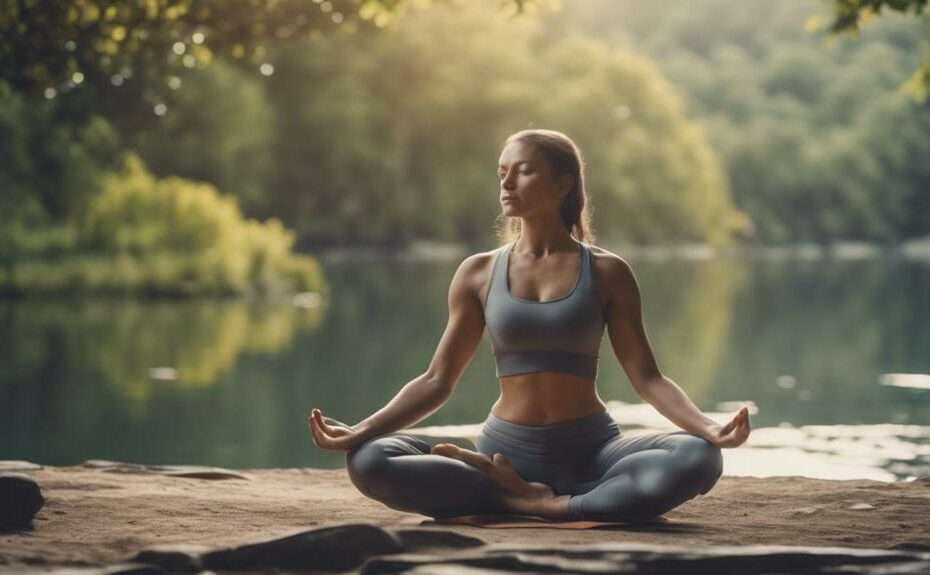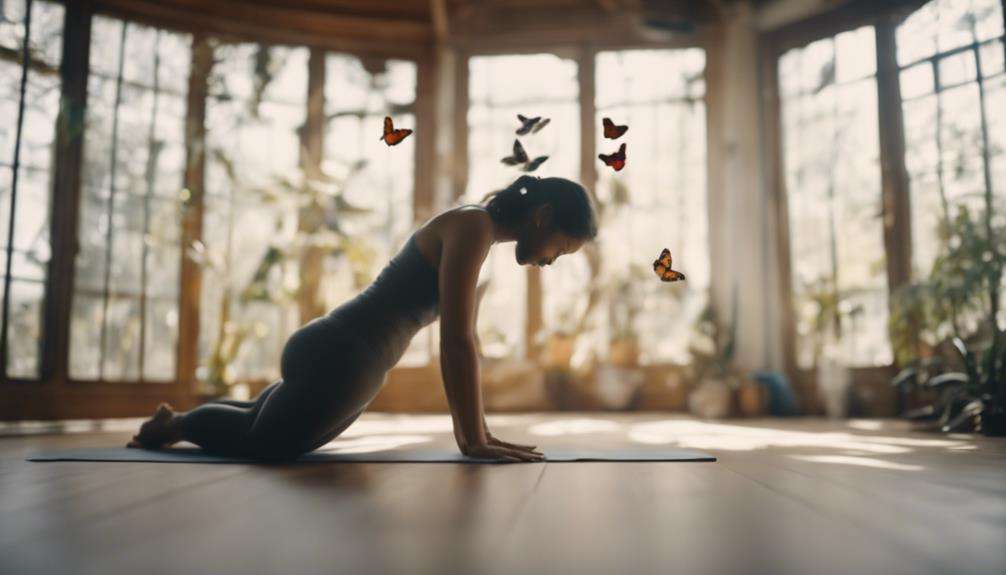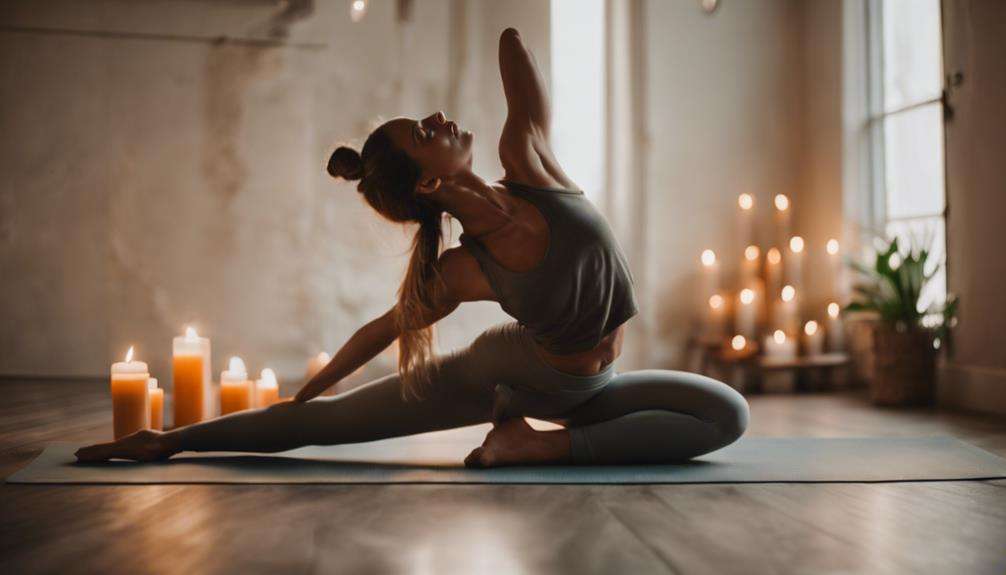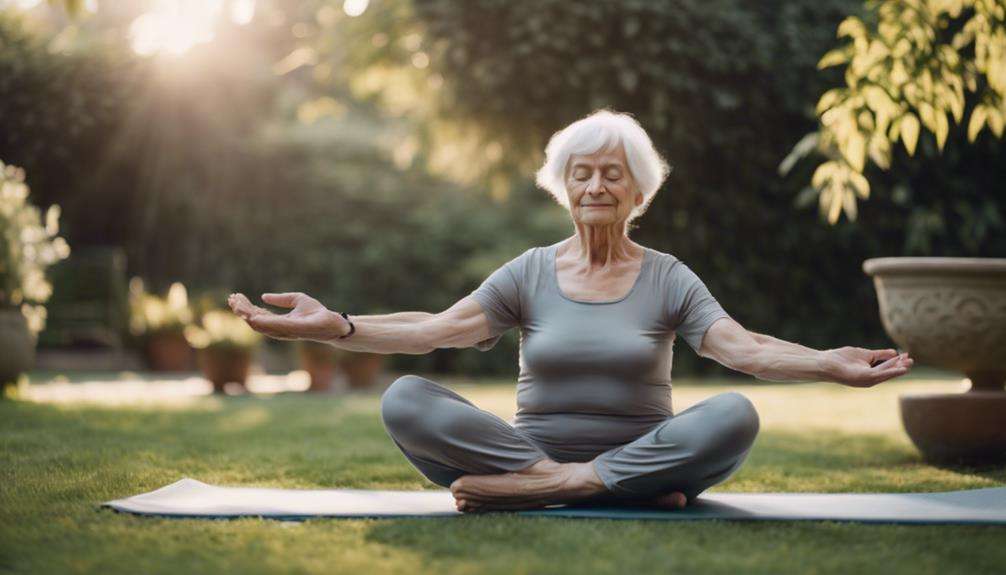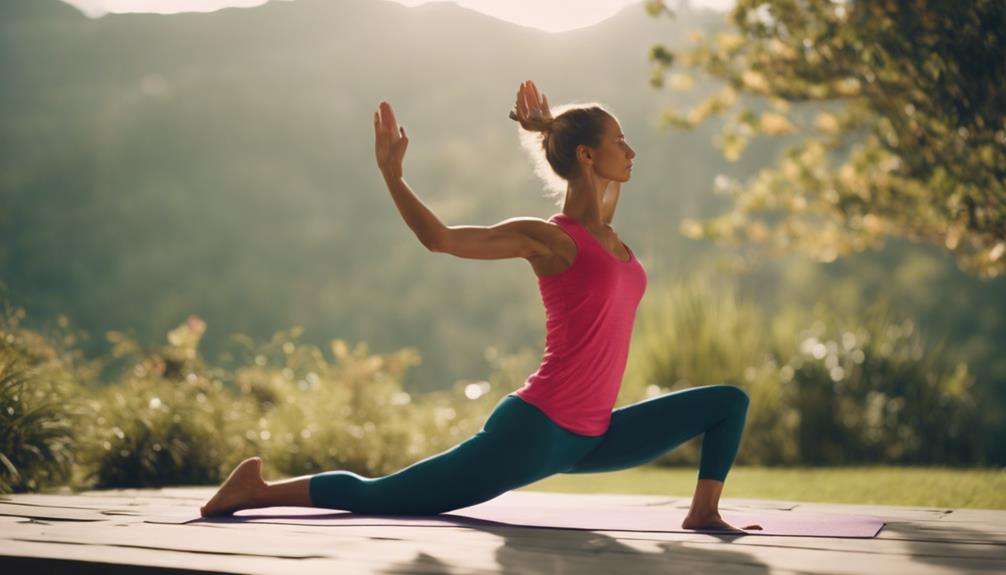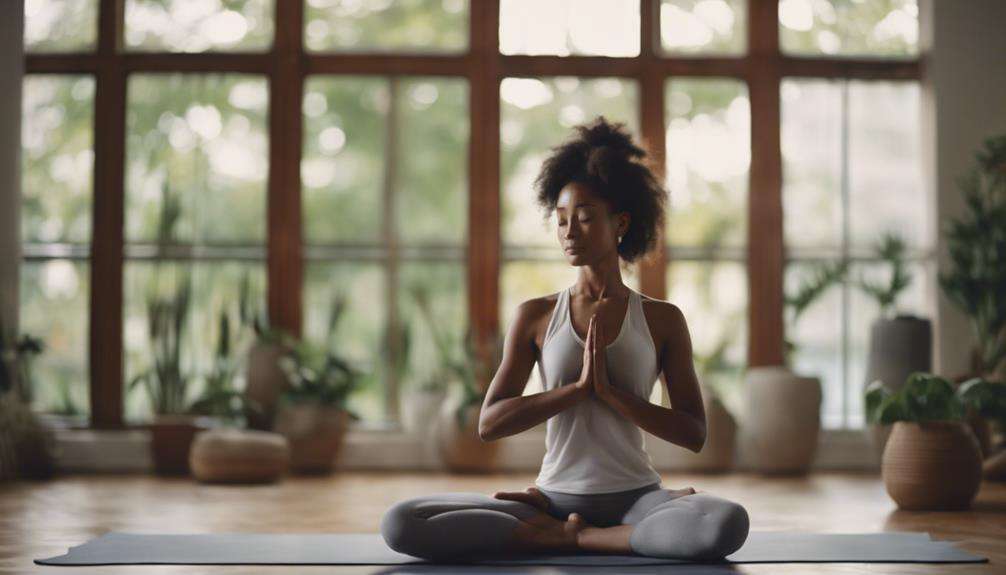Imagine flexibility as the key that unlocks the door to a stress-free mind. As you explore the realm of stress relief through increased flexibility, you'll uncover powerful techniques that not only benefit your body but also your mental well-being.
Each method offers a unique approach to enhancing flexibility while simultaneously combating stress. Discover how these techniques can transform your daily routine and bring about a sense of calm and relaxation that you never thought possible.
Key Takeaways
- Flexibility reduces muscle tension, promotes relaxation, and improves blood flow for stress relief.
- Yoga, breathing, meditation, and stretching techniques aid in stress reduction and enhance flexibility.
- Benefits of flexibility include injury prevention, improved posture, muscle relaxation, and stress relief.
- Incorporating yoga for flexibility and stress relief enhances balance, reduces stress, and improves well-being.
Importance of Flexibility for Stress Relief
Have you ever considered how increasing your flexibility can significantly impact your ability to relieve stress effectively?
Flexibility plays a crucial role in stress relief by reducing muscle tension, promoting relaxation, and improving blood flow to your muscles.
When you engage in stretching exercises to enhance flexibility, you not only increase your joint range of motion but also help prevent injuries and improve your posture, thus reducing stress on your body.
Yoga Poses for Stress Relief
If you're looking for ways to ease stress, consider incorporating simple yoga poses into your routine.
These poses offer a gentle way to release tension in your body and calm your mind.
Give them a try and see how they can help you relax and unwind.
Easy Stress-Relief Poses
To ease your stress and promote relaxation, try incorporating these easy stress-relief poses into your routine.
Child's Pose elongates the back, releasing low back tightness and aiding stress relief.
Seated Spinal Twist combines deep breathing with twisting motions to alleviate stress from the spine.
Happy Baby pose opens the hips, relieves back pain, and provides relaxation.
Lying Glute Stretch targets the lower back and hamstrings, contributing to stress reduction.
Additionally, the Wide-Legged Forward Fold With Chest Expansion helps release tightness in both the upper and lower body, promoting flexibility and relaxation.
Breathing Techniques for Relaxation
Breathing techniques in yoga activate the body's relaxation response, aiding in stress reduction and promoting a sense of calm and well-being. Deep breathing exercises help lower stress levels and induce relaxation.
Yoga poses emphasize full, cleansing breaths that can be practiced anywhere, enhancing flexibility and reducing tension. Poses like Child's Pose and Happy Baby elongate the back, release muscle stiffness, and alleviate stress.
By incorporating breathing techniques into your yoga practice, you not only improve flexibility but also foster a deep sense of relaxation. Remember, focusing on your breath can help you find peace and tranquility in the midst of life's demands.
Practice these techniques regularly to experience the full benefits of stress relief and increased flexibility.
Meditation Techniques for Flexibility
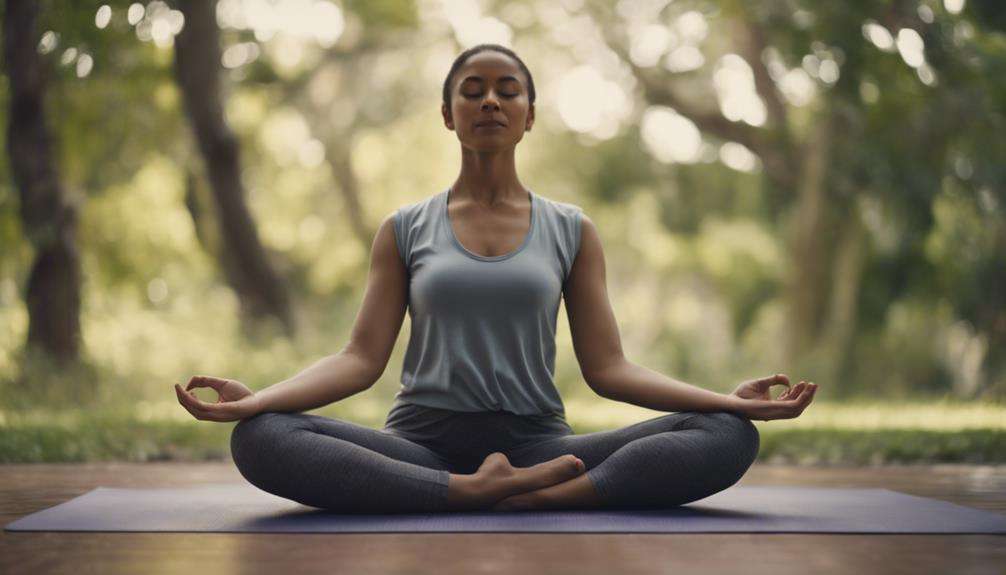
When exploring methods to enhance your flexibility, incorporating meditation techniques can be a valuable and soothing approach. Body scan meditation, where you focus on different body parts without judgment, can help increase flexibility by promoting awareness and relaxation.
Visualization techniques in meditation enhance flexibility by fostering mindfulness and body awareness, aiding in relaxation. Mindfulness meditation trains you to be fully present in the moment, heightening bodily sensations and potentially improving flexibility.
Guided mindful breathing meditations can also enhance flexibility by increasing body awareness and promoting relaxation throughout your practice. Regular meditation sessions can lead to improved flexibility over time, as they emphasize mindfulness and body awareness—essential aspects of flexibility training.
Embrace these meditation techniques to not only reduce stress but also to enhance your overall flexibility and well-being.
Stretching for Stress Reduction
Enhance your stress relief efforts by incorporating stretching into your routine to increase flexibility, promote muscle relaxation, and improve overall well-being.
Stretching is a powerful tool for maintaining good health, as it enhances muscle flexibility and range of motion while promoting relaxation. By engaging in regular stretching sessions, you can reduce muscle stiffness, soreness, and improve blood circulation, which are essential elements for stress reduction.
When you hold stretches for 15-60 seconds, 2-4 times each, you can maximize the stress relief benefits. Not only does stretching have physical benefits, but it also releases endorphins, which are known to boost mood, decrease anxiety, and promote overall mental well-being.
Tai Chi for Flexibility and Calm
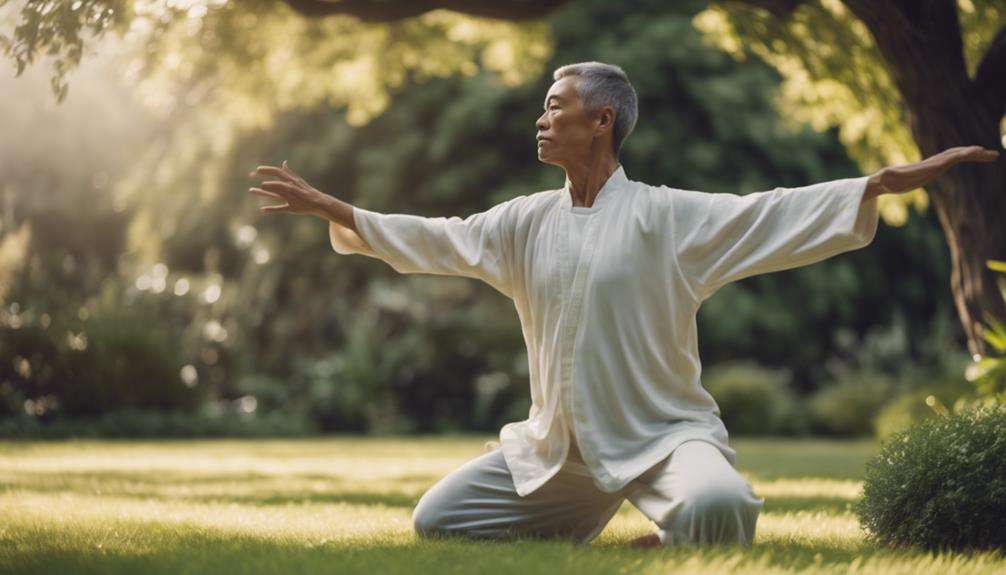
Tai Chi offers a gentle yet effective way to enhance flexibility and promote a sense of calm through its slow, flowing movements and deep breathing techniques. This ancient Chinese practice not only improves physical flexibility but also aids in stress relief and mindfulness.
By engaging in the graceful motions of Tai Chi, you can experience increased balance, muscle strength, and overall well-being. The meditative aspect of Tai Chi encourages you to focus on the present moment, fostering mental clarity and relaxation.
Studies have shown that regular practice of Tai Chi can reduce feelings of stress, anxiety, and depression, making it a valuable tool for enhancing your mental health. Regardless of your age or fitness level, Tai Chi provides a low-impact way to boost flexibility while promoting a sense of calm and inner peace.
Embrace the flowing movements of Tai Chi to cultivate both physical and mental flexibility for a healthier, more balanced life.
Breathing Exercises for Relaxation
Take a moment to focus on your breath – it's a simple yet powerful tool for relaxation.
By practicing calming breath techniques and engaging in mindful breathing, you can effectively reduce stress and promote a sense of calm.
Calming Breath Techniques
When seeking relaxation and stress relief, one effective method is to practice calming breath techniques, which involve deep, slow breathing to activate the body's relaxation response.
Here are three ways calming breath techniques can enhance your well-being:
- Anywhere, Anytime: These breathing exercises can be practiced wherever you are, helping to reduce stress levels on the go.
- Enhanced Relaxation: Combining deep breathing with aromatherapy or soothing music can amplify the relaxation benefits.
- Guided Assistance: Utilize apps and audio guides to assist you in learning and mastering calming breath techniques for a more structured practice.
Mindful Breathing Practice
To begin your mindful breathing practice for relaxation, focus on your breath as a guide to induce a sense of calm and reduce stress levels effectively.
Deep breathing exercises can activate the body's natural relaxation response, promoting a profound sense of well-being.
Mindful breathing can be seamlessly integrated into your daily routine, offering a convenient technique for stress relief wherever you are.
Research supports the benefits of regular mindful breathing, showing that it can lower blood pressure, reduce anxiety, and enhance overall mental health.
By incorporating mindful breathing into your life, you not only promote stress relief but also lay a foundation for improved flexibility and mindfulness.
Embrace the power of mindful breathing to cultivate a peaceful and balanced state of mind.
Mindfulness Practices for Flexibility
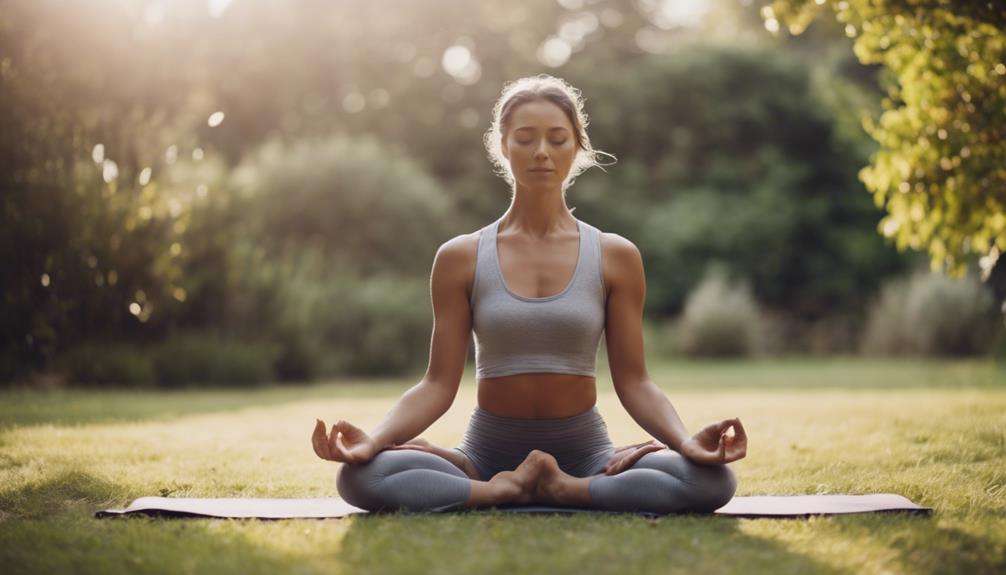
Enhance your flexibility through mindfulness practices like body scan meditation and visualization, promoting awareness of bodily sensations and movement. Incorporating mindfulness techniques can greatly benefit your flexibility journey. Here are three ways mindfulness practices can help you improve your flexibility:
- Body Scan Meditation: Engage in body scan meditations to bring attention to each part of your body, releasing tension and promoting relaxation. This practice can help you identify areas of stiffness that may be hindering your flexibility.
- Guided Imagery: Use guided imagery to visualize yourself moving with ease and grace. This technique can enhance your mind-body connection, making your stretching routines more effective.
- Progressive Muscle Relaxation: Practice progressive muscle relaxation to systematically tense and release muscle groups. This can help you become more aware of muscle tension and learn to let go, leading to increased flexibility over time.
Incorporating Flexibility Into Daily Routine
To enhance your flexibility, consider integrating stretching into your daily routine.
By incorporating simple stretching exercises or even a short yoga session into your day, you can experience the benefits of increased flexibility.
These practices can help reduce muscle stiffness, improve range of motion, and contribute to your overall well-being.
Stretching for Flexibility
Incorporating flexibility into your daily routine through stretching can bring numerous benefits to your overall well-being and stress relief. Here are three essential tips to help you enhance your flexibility and combat muscle tension:
- Consistent Practice: Commit to stretching five times a week for at least 15-30 seconds per stretch initially, gradually increasing the duration to 60 seconds. Consistency is key to improving flexibility.
- Variety of Stretches: Incorporate different stretching exercises that target various muscle groups to promote overall flexibility and reduce stiffness from daily activities.
- Listen to Your Body: Pay attention to your body's signals. Stretch to the point of mild tension, not pain, to prevent injury and gradually improve your flexibility over time.
Yoga for Daily Routine
Transform your daily routine by integrating the calming practice of yoga to boost flexibility and reduce stress levels. Yoga is a powerful tool for stress relief, enhancing flexibility, balance, and mental focus.
By incorporating yoga into your daily schedule, you can experience the benefits of reduced stress and increased overall well-being. The various yoga poses are specifically designed to stretch and strengthen muscles, improving flexibility and mobility. Additionally, the breathing techniques in yoga help calm the mind, lower anxiety levels, and promote relaxation.
Consistent practice of yoga can lead to better physical and mental health outcomes, contributing to a more balanced and harmonious lifestyle. Embrace the practice of yoga to cultivate a sense of inner peace and flexibility in both body and mind.
Benefits of Flexibility
Enhance your daily routine by embracing the benefits of flexibility, improving your overall well-being and quality of life. Here are three ways flexibility can positively impact your daily life:
- Reduced Risk of Injuries: Improved joint range of motion from flexibility exercises lowers the chances of getting injured during physical activities.
- Enhanced Posture and Balance: Including flexibility exercises in your daily routine can help you maintain better posture and balance throughout the day.
- Alleviation of Muscle Tension: Increased flexibility aids in alleviating muscle tension, promoting relaxation, and reducing overall physical tension in the body.
Incorporating these benefits of flexibility into your daily routine can lead to better stress relief and a healthier, more active lifestyle.
Flexibility Workouts for Stress Relief
For stress relief, consider incorporating flexibility workouts like yoga and stretching into your daily routine. These exercises target both the physical and mental aspects of stress.
Flexibility workouts, such as yoga, can help release tension in the muscles, promoting relaxation and reducing stiffness. Regular stretching not only increases your range of motion but also improves blood flow and oxygenation, leading to mood enhancement through serotonin release.
Flexibility and Mental Well-being
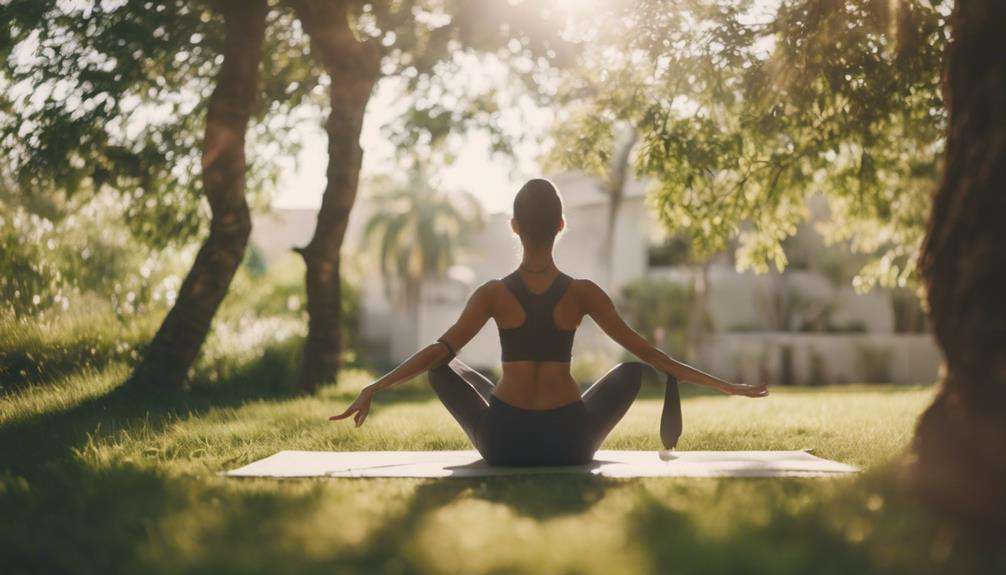
Transitioning from the beneficial effects of flexibility workouts, let's explore how increased flexibility plays a crucial role in promoting mental well-being and stress relief. Here are three key ways in which flexibility and stretching can positively impact your mental health and stress levels:
- Muscle Tension Reduction: Increased flexibility through stretching helps decrease muscle tension, aiding in stress relief and promoting mental well-being.
- Range of Motion Improvement: Regular stretching routines not only combat stiffness but also enhance flexibility, contributing to overall stress relief and a more relaxed state of mind.
- Endorphin Release: Stretching for stress relief can enhance circulation, release endorphins, and improve mood by reducing muscle tension and inducing a sense of relaxation.
Frequently Asked Questions
What Are the Best Techniques for Stress Relief?
To relieve stress, try breathing exercises and meditation. Embrace yoga and mindfulness. Connect with nature on walks, or pour your thoughts into journaling. Treat yourself to massage or acupuncture. These techniques can help you find calm and flexibility.
What Is One of the Most Effective Stress Relieving Techniques?
Take a moment to breathe deeply. It's one of the most effective stress-relieving techniques. Practice it anywhere, anytime. Feel immediate relaxation by focusing on your breath. Combine with aromatherapy for added calmness. You got this.
Which Stress Reduction Technique Is Most Effective?
You'll find that mindfulness practices are most effective for stress reduction. Engage in breathing exercises, meditation techniques, and yoga poses. Embrace these tools to cultivate calmness and resilience in the face of challenges.
How Stretching Can Help to Reduce Stress?
Stretching enhances mind-body connection, aiding in stress reduction. Deep breathing during yoga poses promotes physical relaxation. Embrace these techniques for increased flexibility and reduced stress. Feel the benefits as you unwind and rejuvenate.
Conclusion
You've learned the key to stress relief through flexibility.
Did you know that regular stretching can decrease cortisol levels by up to 30%?
Incorporate these techniques into your daily routine for a calmer, more relaxed mind and body.
Remember, taking care of your flexibility is taking care of your overall well-being.
Keep stretching, keep breathing, and keep feeling better every day.
You've got this!
